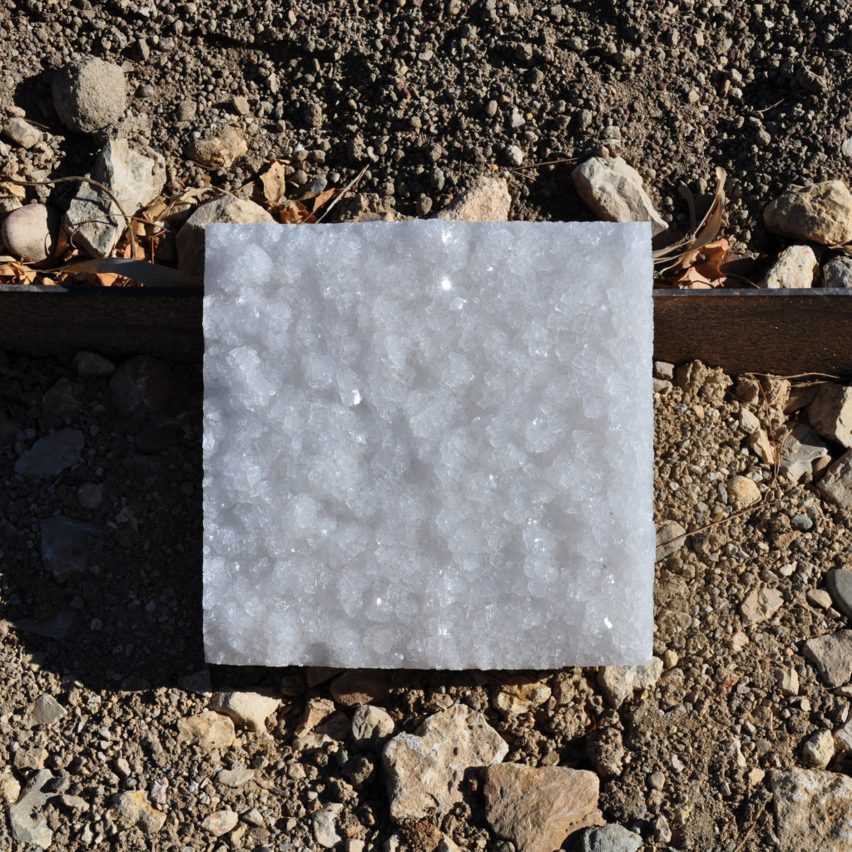
Material designers Henna Burney and Kalijn Sibbel of Atelier Luma have used ancient salt marshes in southern France to create thousands of glass-like panels and installed them as cladding inside Frank Gehry's Arles tower.
Over 4,000 of the panels, which are all made from salt crystals, line the lift lobbies on nine floors of the tower, designed by Gehry for the Luma Arles arts centre.
The panels were created by Sibbel and Burney, who are designers at the art centre's design lab Atelier Luma, as part of a four-year-long project in the Camargue salt flats.
The project was carried out to explore the natural crystallisation of salt that occurs there, and develop new applications for the material in the fields of design and architecture.
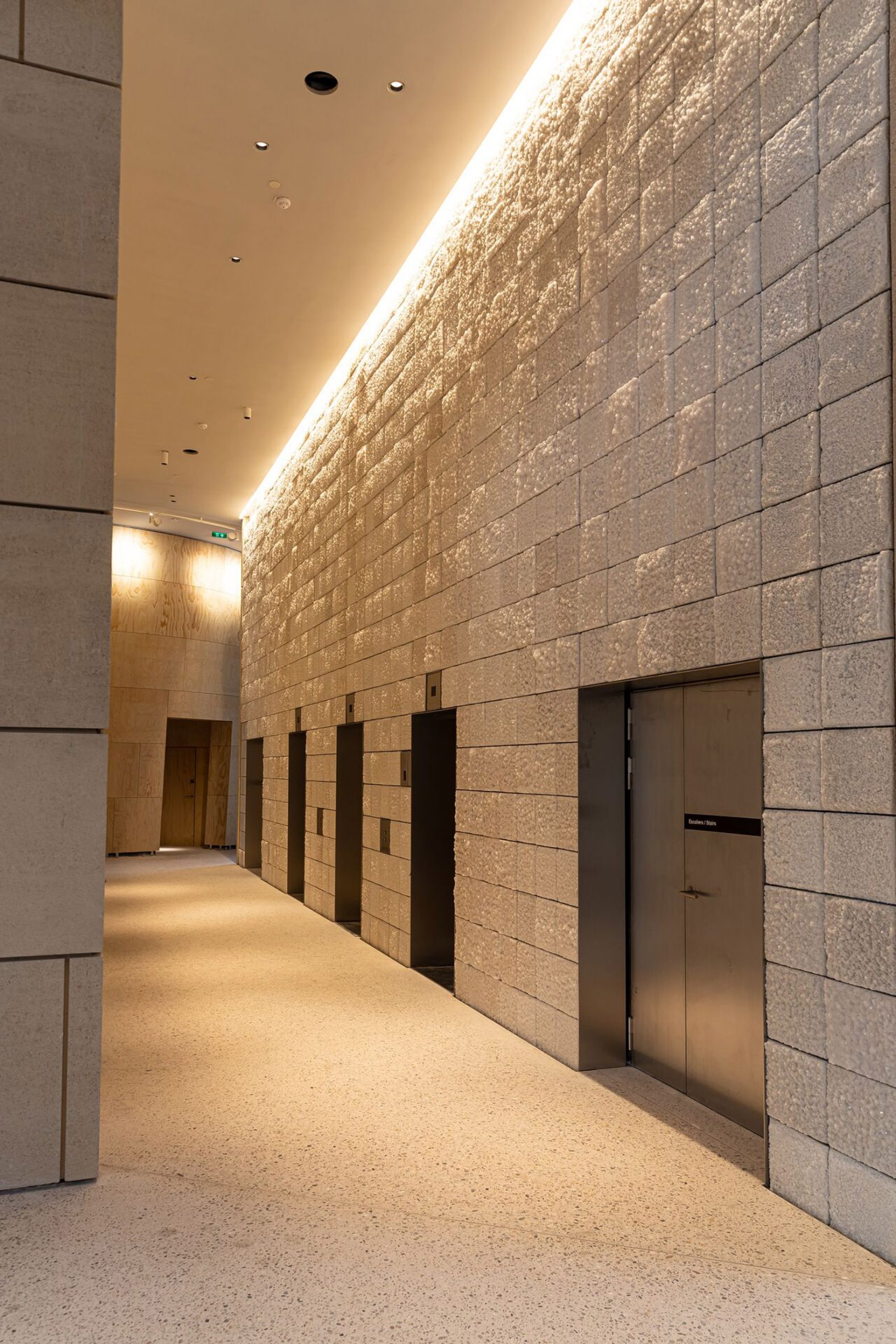
The salt cladding is being exhibited today by Burney as part of her guest editorship for Dezeen 15 – a digital festival celebrating Dezeen's 15th birthday.
Later today, Burney will also speak to Dezeen's editor-in-chief Marcus Fairs in a live interview and explain the studio's manifesto for the use of salt as "a material of the future".
"The wall of salt is a way to prove that it is possible to design with salt and it is possible to take it from its usual applications," Burney told Dezeen.
"It is also a way to prove that materials can also be grown and that maybe not every aspect of its production needs to be fully controlled."
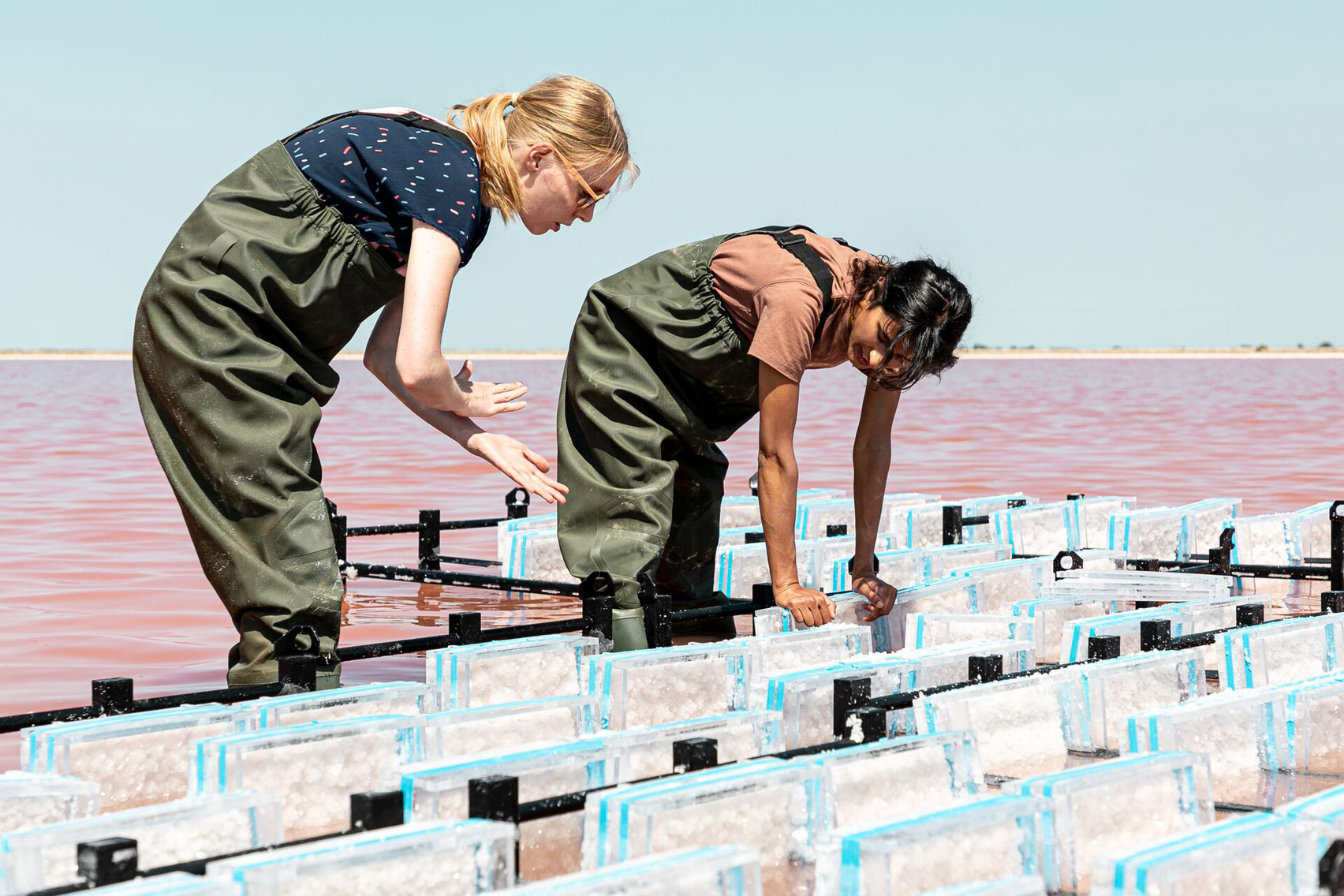
Burney and Sibbel's study of salt forms part of a wider project at Atelier Luma involving the development of new materials from local resources in the Camargue region.
The ancient salt marshes, named the Salins du Midi, were chosen because the site has been little used in recent years and the designers believed it could be utilised more effectively.
"The salt marshes called Les Salins du Midi situated in the city of Salins de Giraud have been producing salt since the 20th century," added Burney.
"During the fifties, the economy of the region was based on the production of derived salt products as soda and sodium carbonate," she continued. "Nowadays the use of salt is notoriously reduced, making salt an abundant material to be explored."
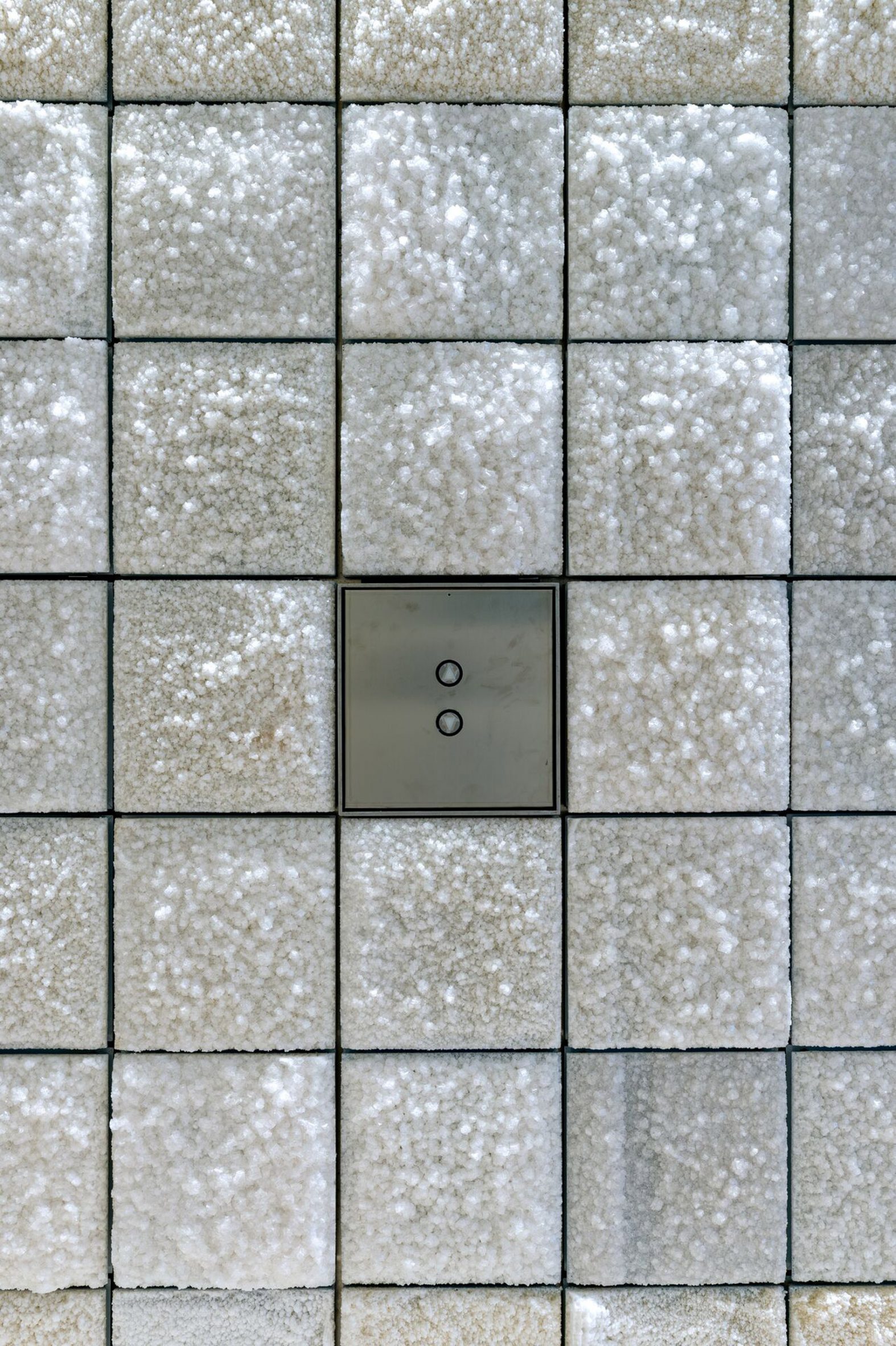
To carry out the work, Atelier Luma set up the Crystallization Plant at the site to work in collaboration with saltmakers at the Salins du Midi and learn about the crystallisation process.
Each cladding panel is made by designers Sibbel and Burney using a custom metal mesh frame. The metal meshes are submerged underwater in the salt marshes, where salt crystals grow all over their surface.
This natural crystallisation process takes approximately two weeks and relies solely on the sun and wind.
The result is a series of cladding panels with a glass-like quality. The size and colour of the crystals depend on the weather conditions. According to Atelier Luma, they are also naturally fire-proof, meaning they are safe for use in public space.
By using a natural process of crystallisation, the process of crafting the panels has a low environmental impact and means it can be regularly carried out at the site.
As salt is not a common material to be used inside public buildings, Atelier Luma required certification through the Scientific and Technical Centre for Building (CSTB) in France to use the panels inside Gehry's tower.
To achieve this, the studio studied the performance of the panels in terms of their strength and durability. Crystallised salt is now certified for use.
"This process was an excellent example to prove how the certification organisations are able to adapt their limits in order to accept new and natural materials," Burney said.
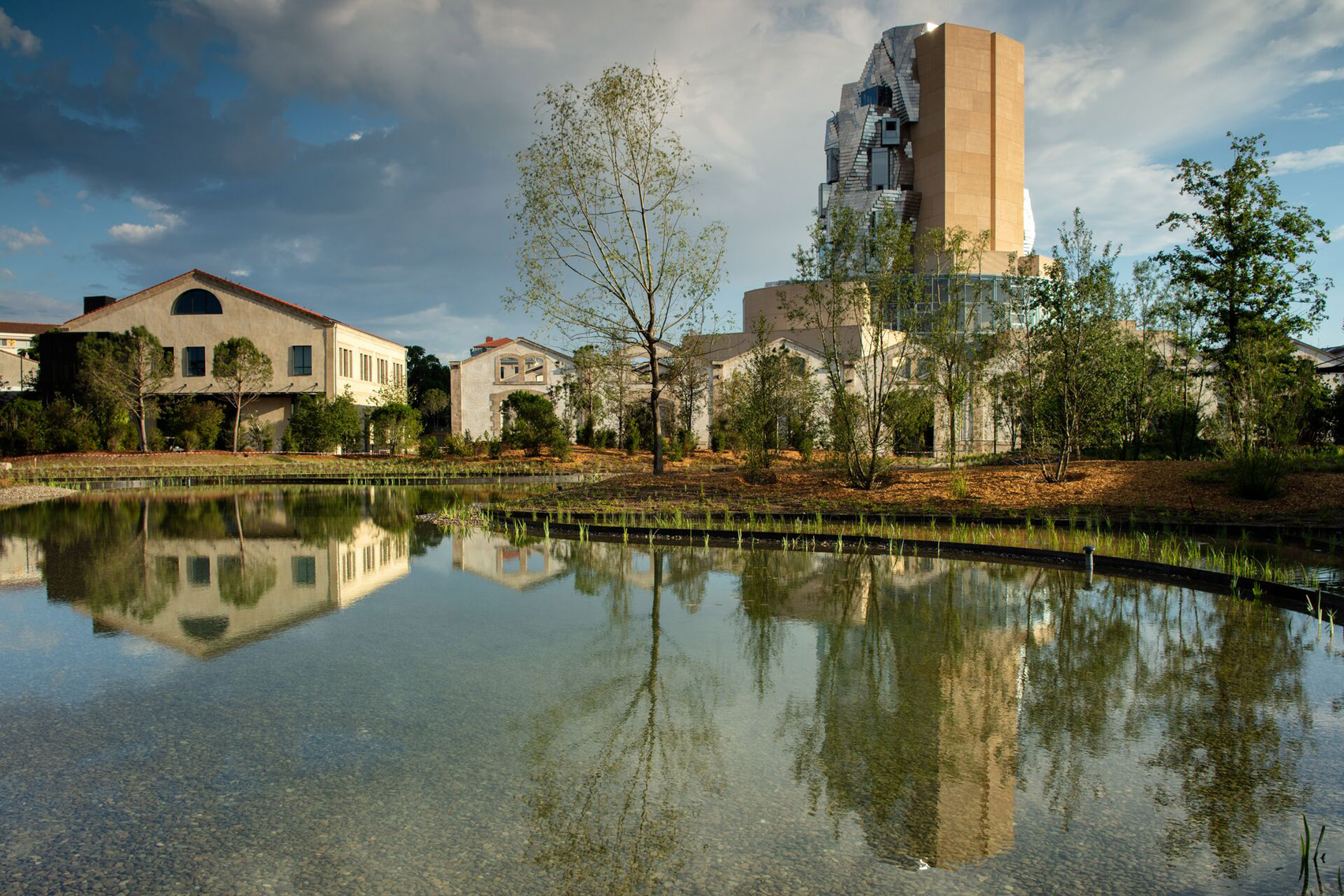
Atelier Luma is a research platform and circular design lab that was established in 2016 by Luma Arles – an arts centre in Arles. It is currently led under the direction of Jan Boelen.
The salt panels were not the only interior finishes the studio designed and approved for use in the Luma Arles tower from natural materials.
The toilets are finished in multicoloured tiles made from algae harvested in the salt flats, while thin acoustic material for the building has been made from sunflower waste. The sunflower's seeds are also pressed and used to make biofuel that powers the building.
The post Atelier Luma uses salt crystals to create glass-like cladding material appeared first on Dezeen.
from Dezeen https://ift.tt/3CdLjPU
No comments:
Post a Comment